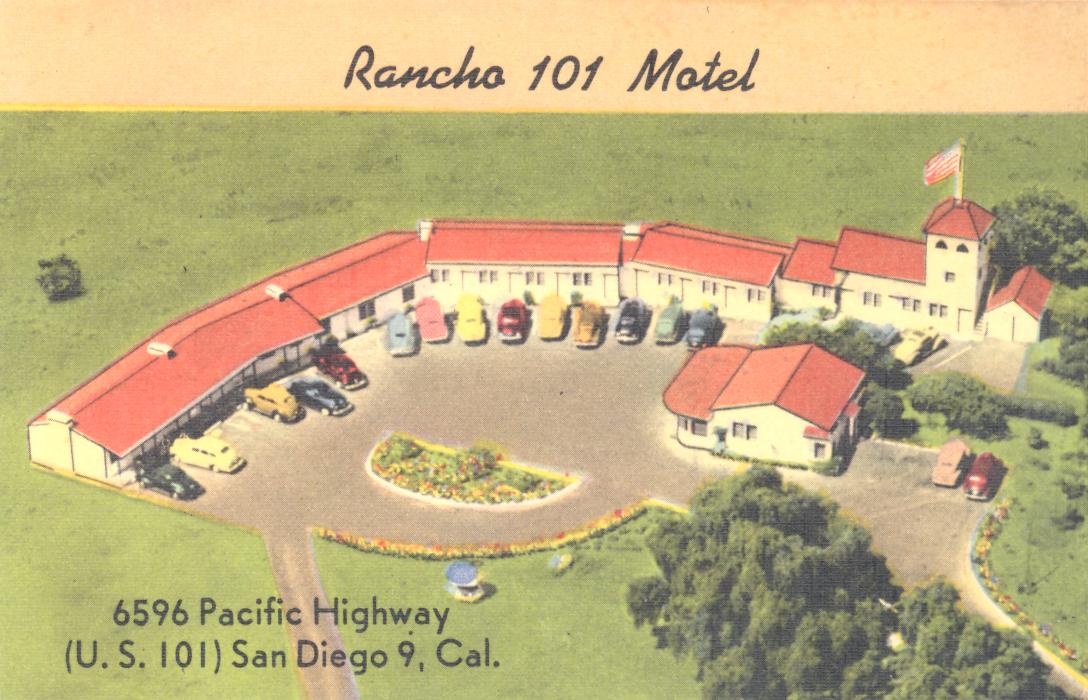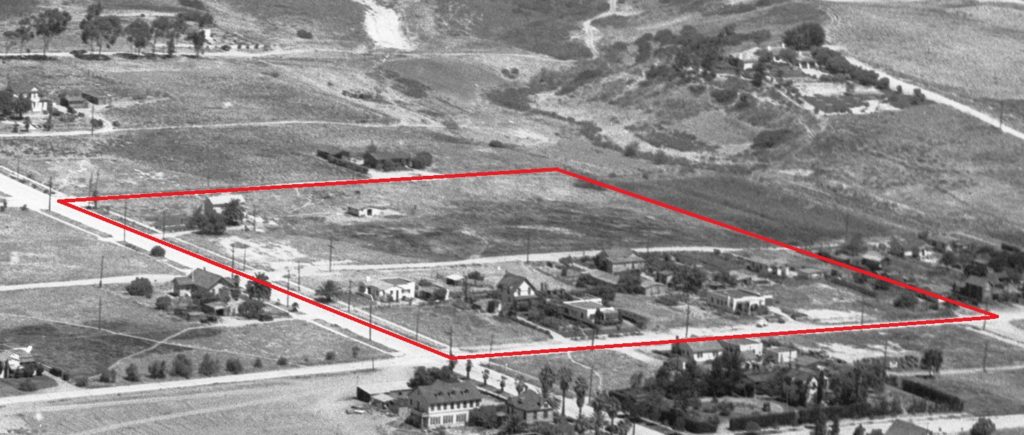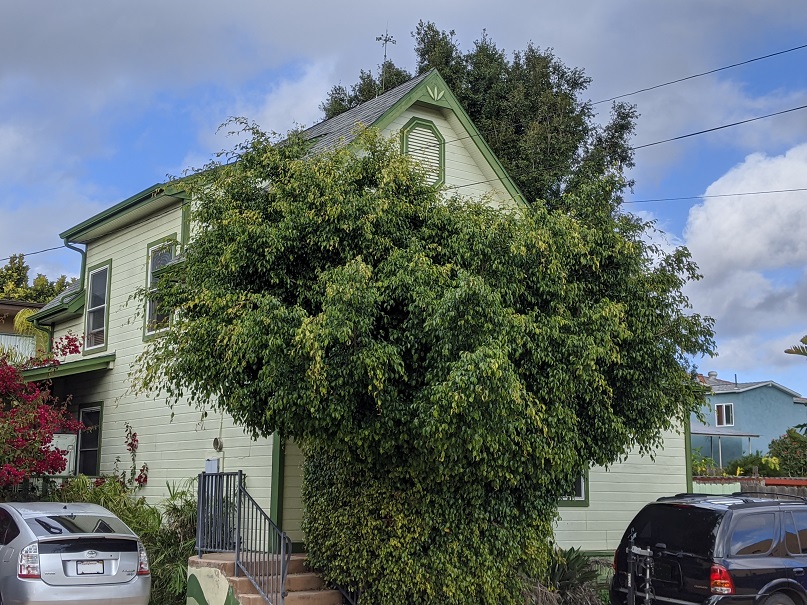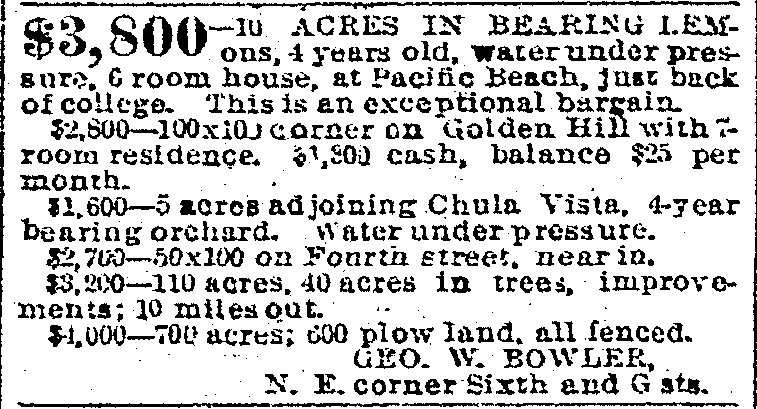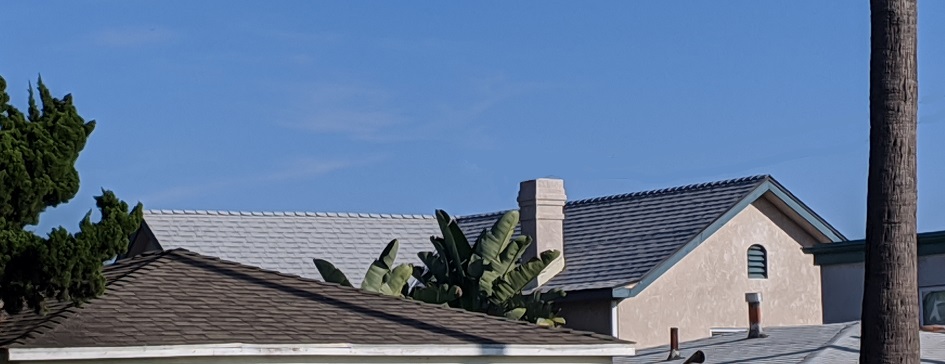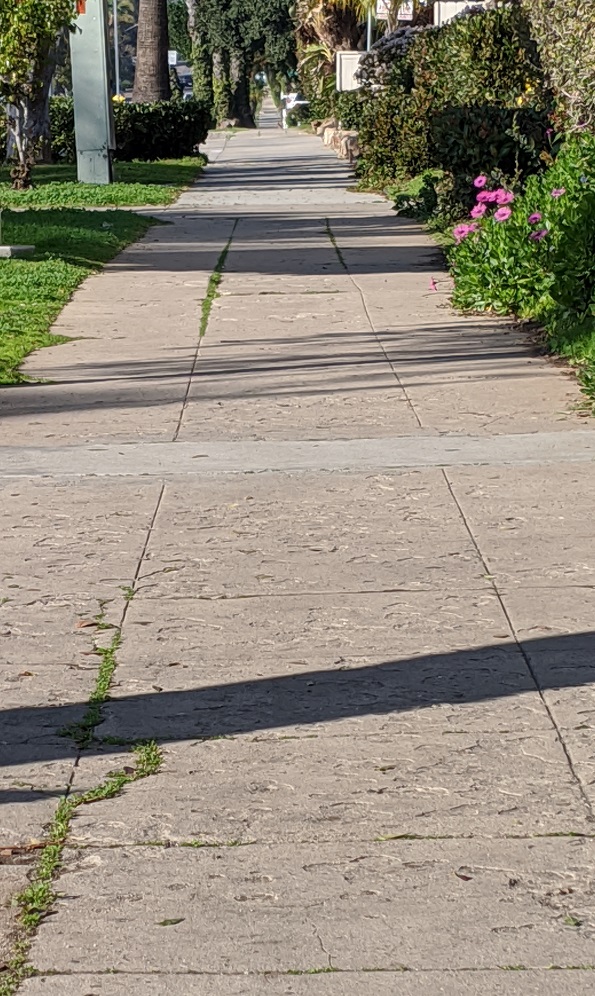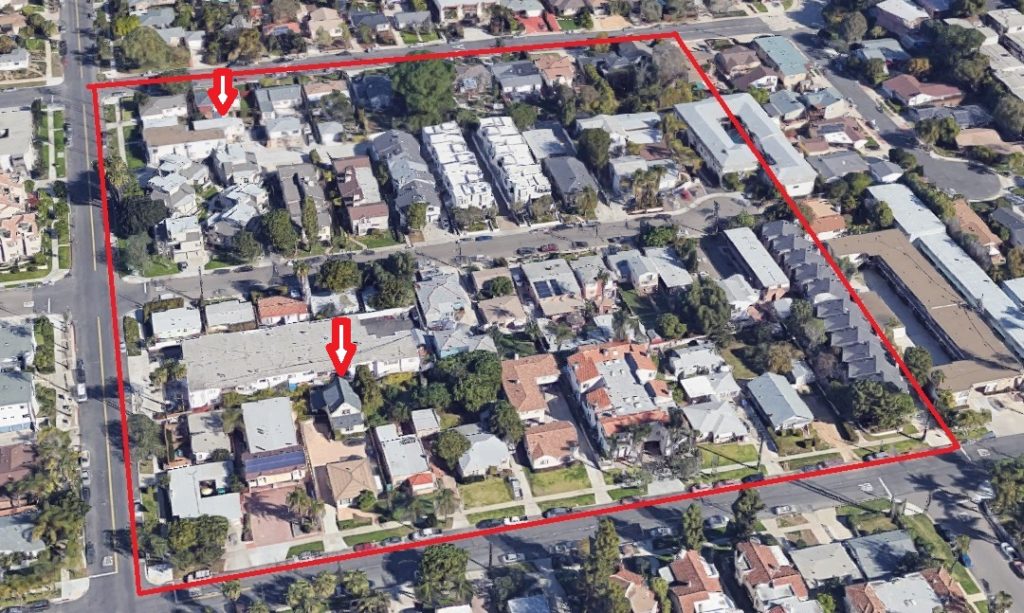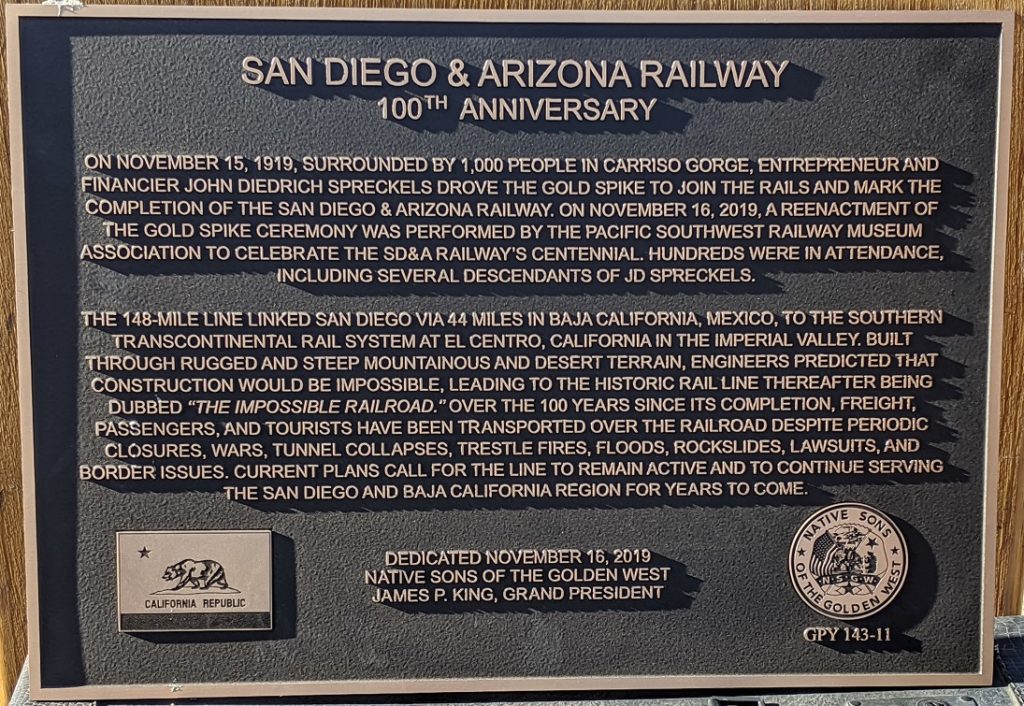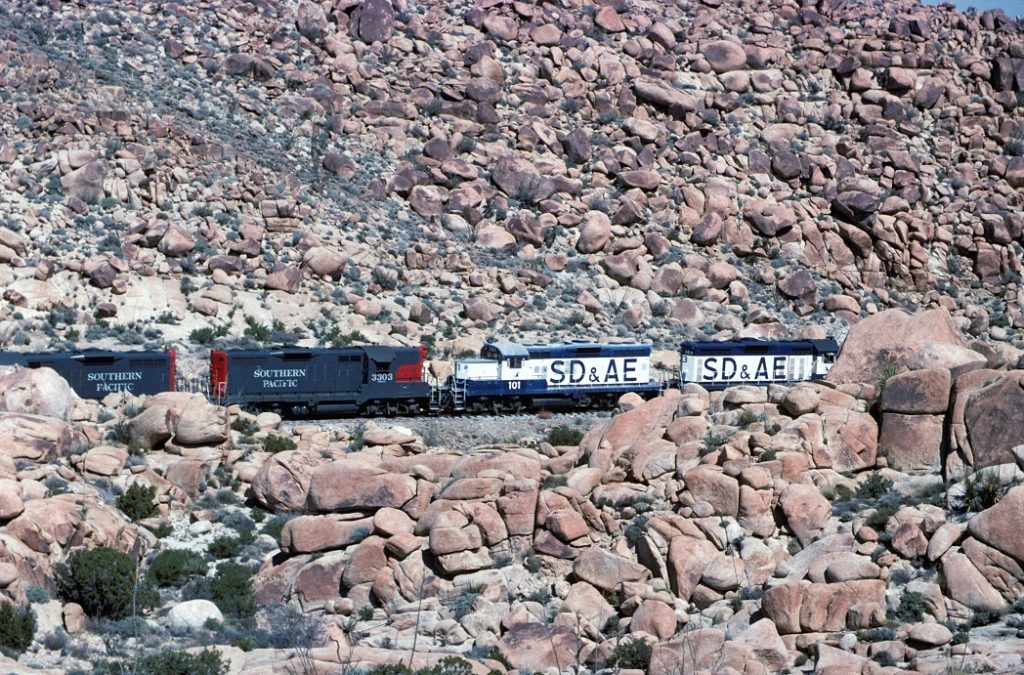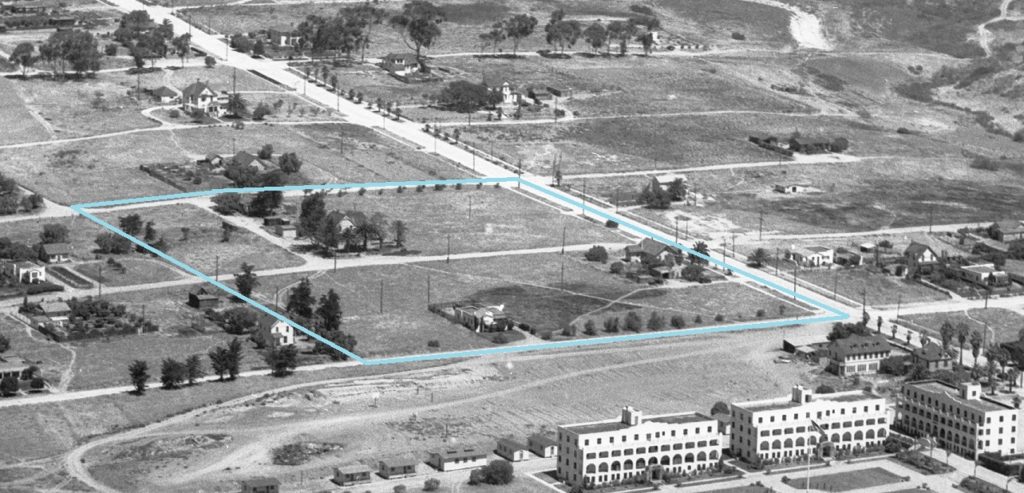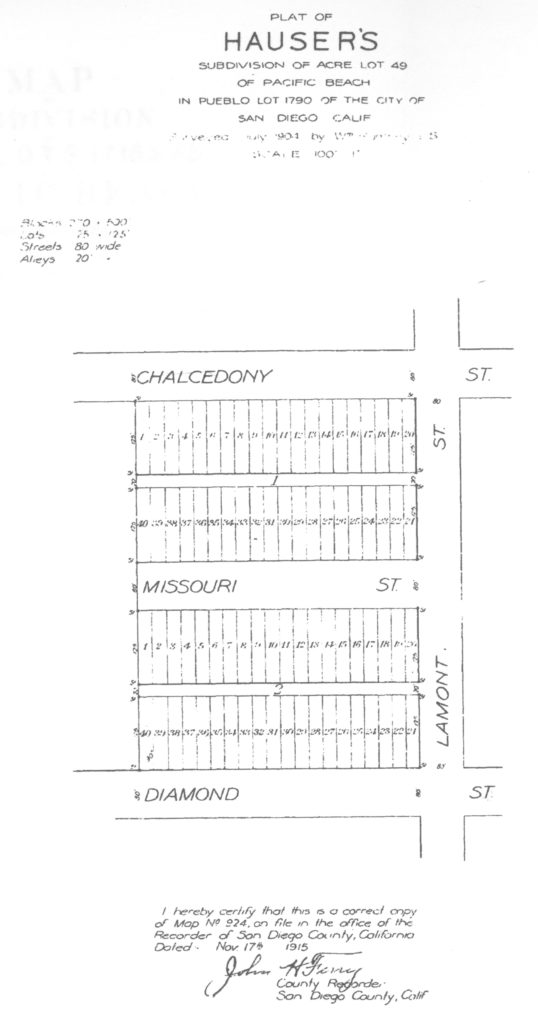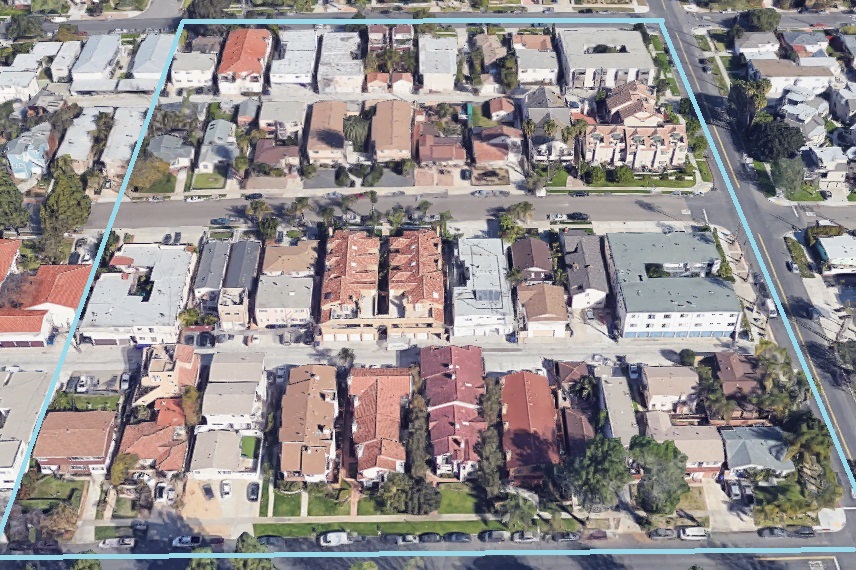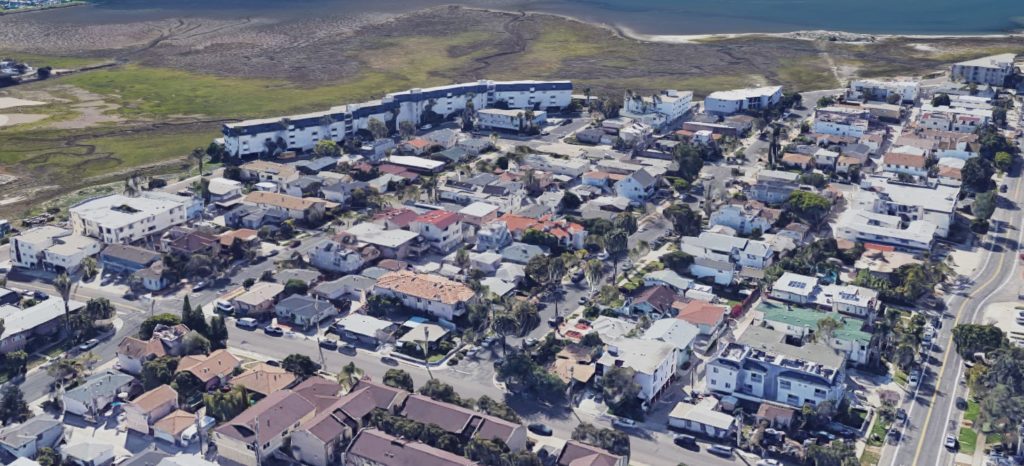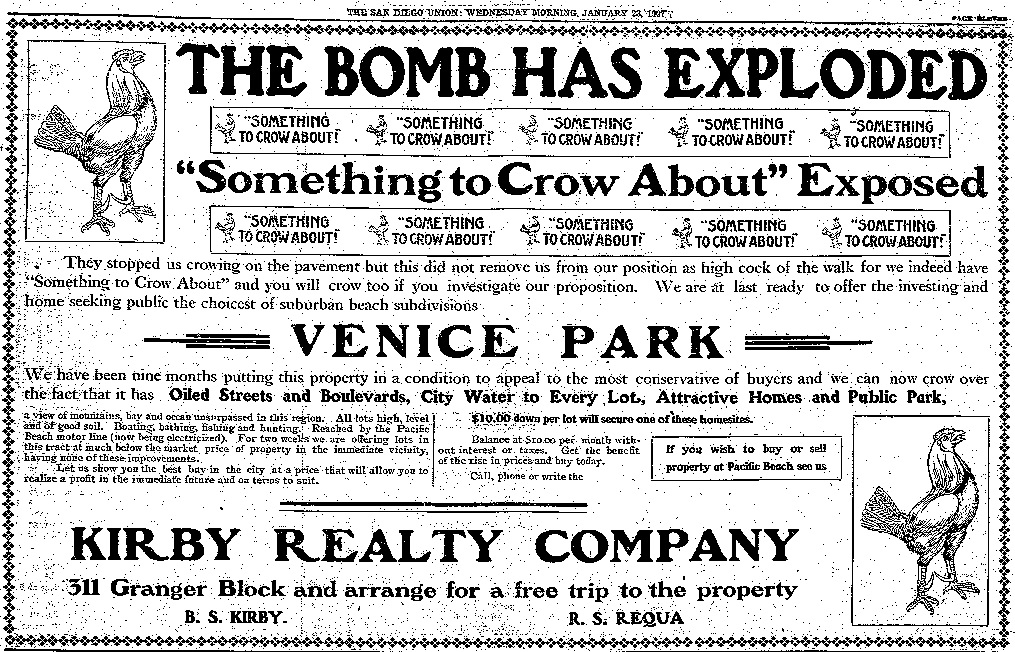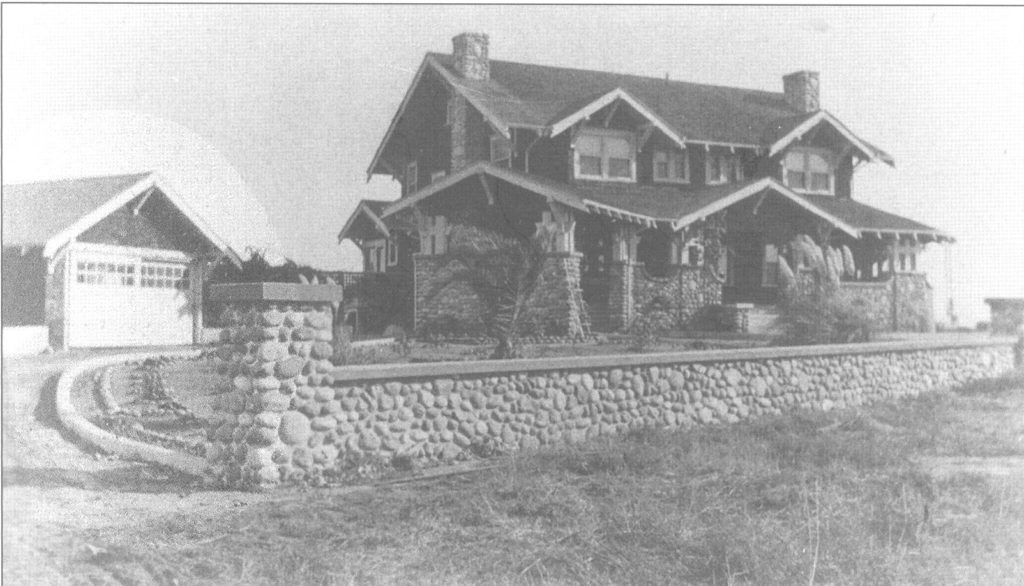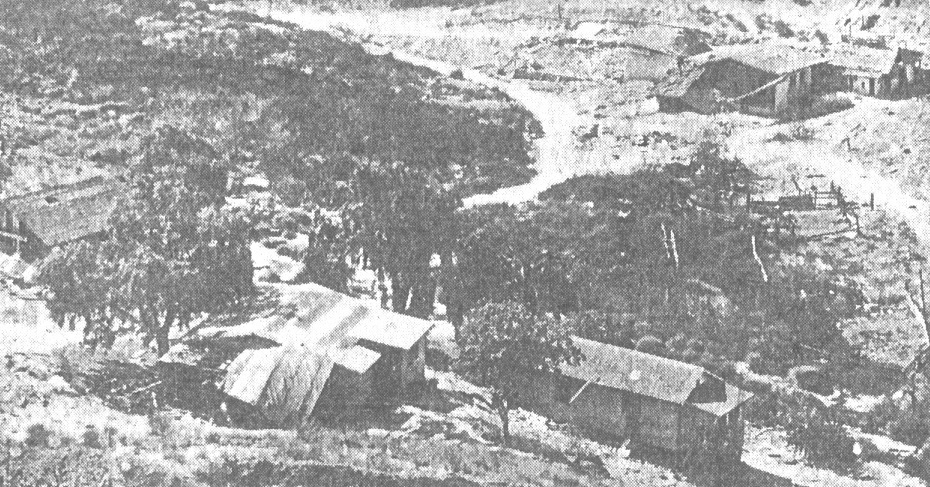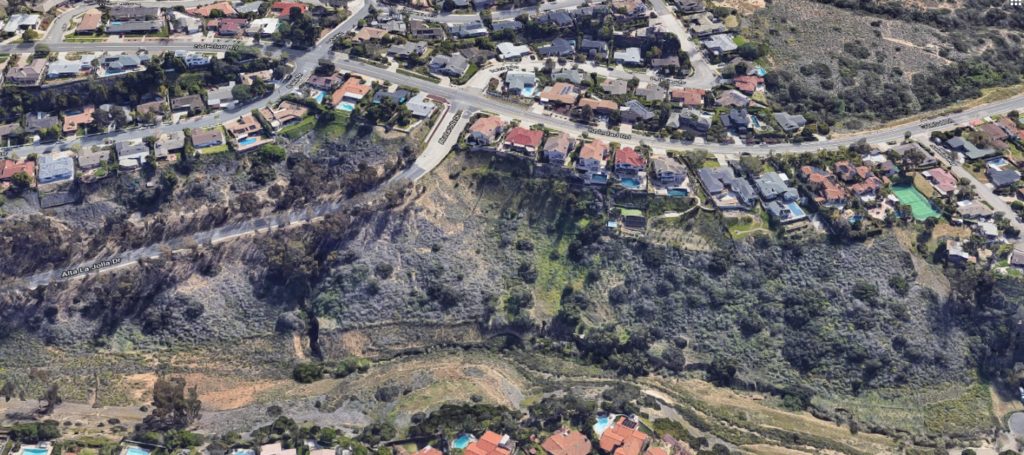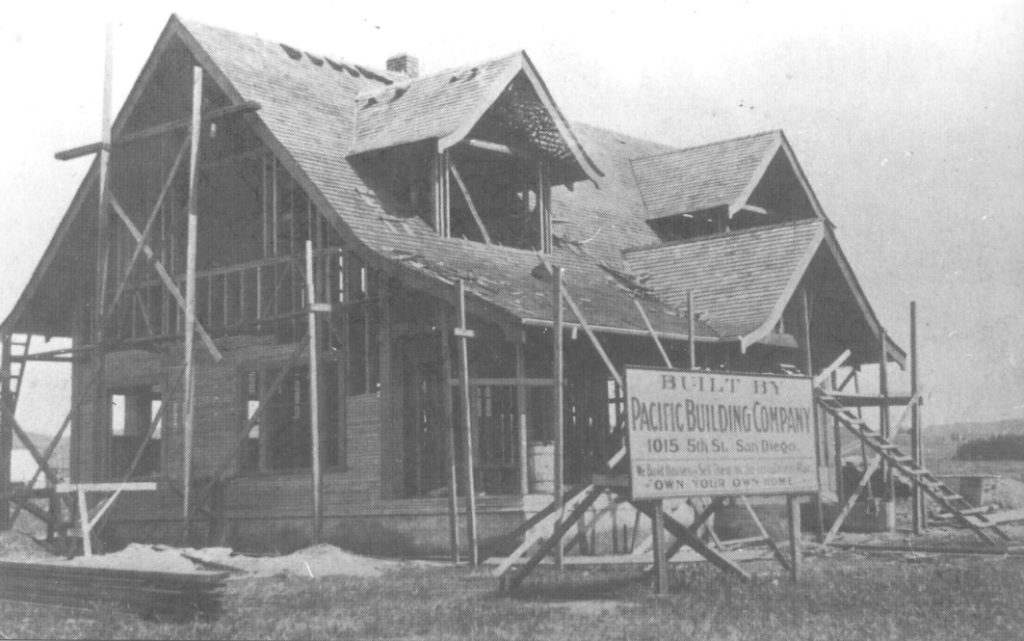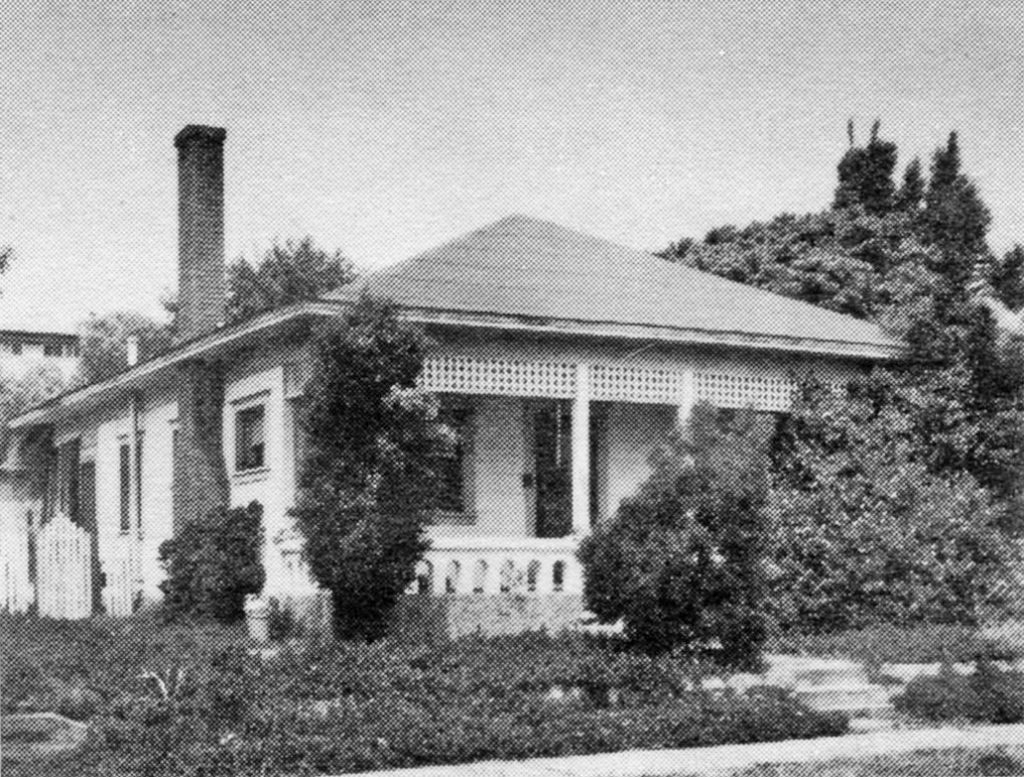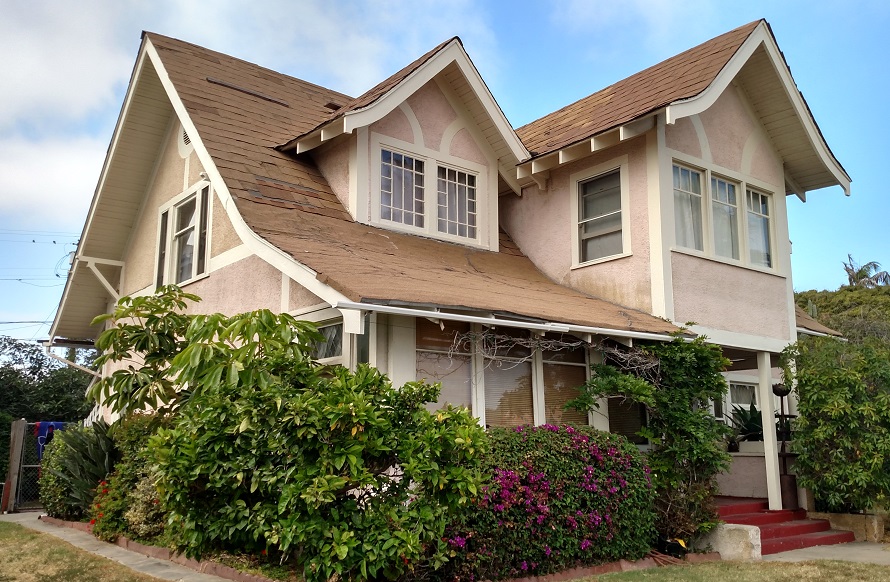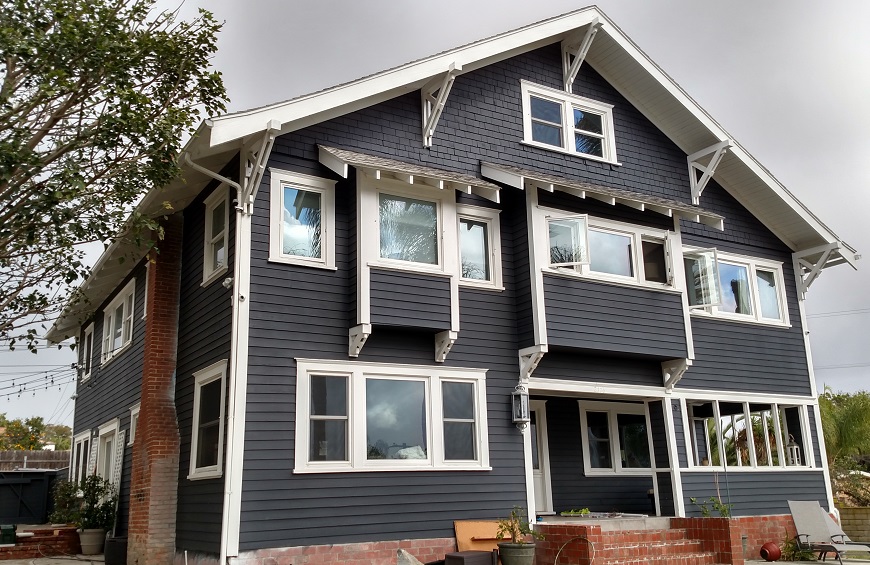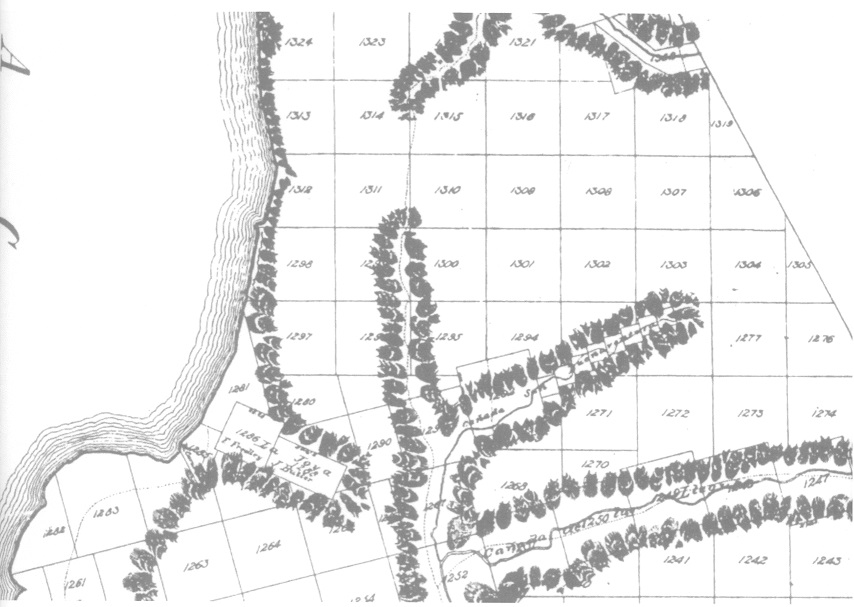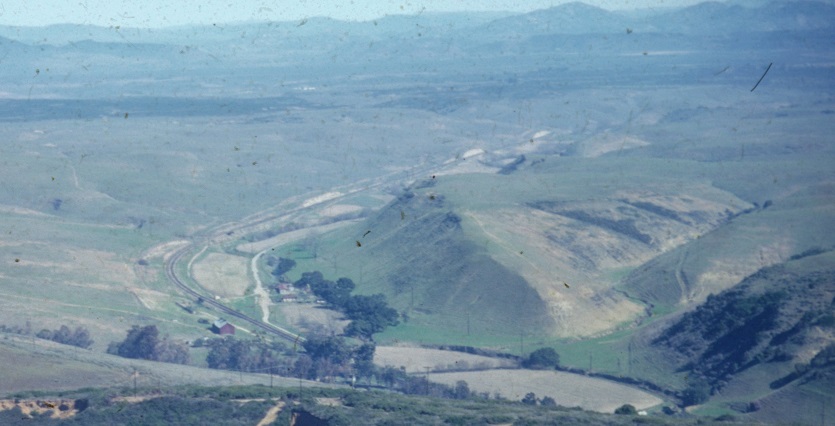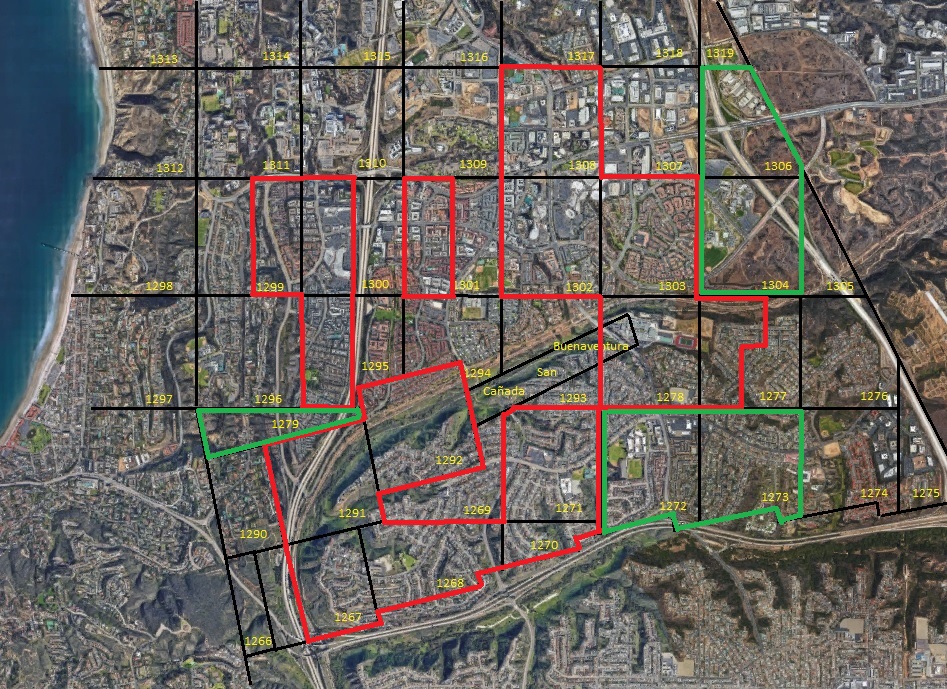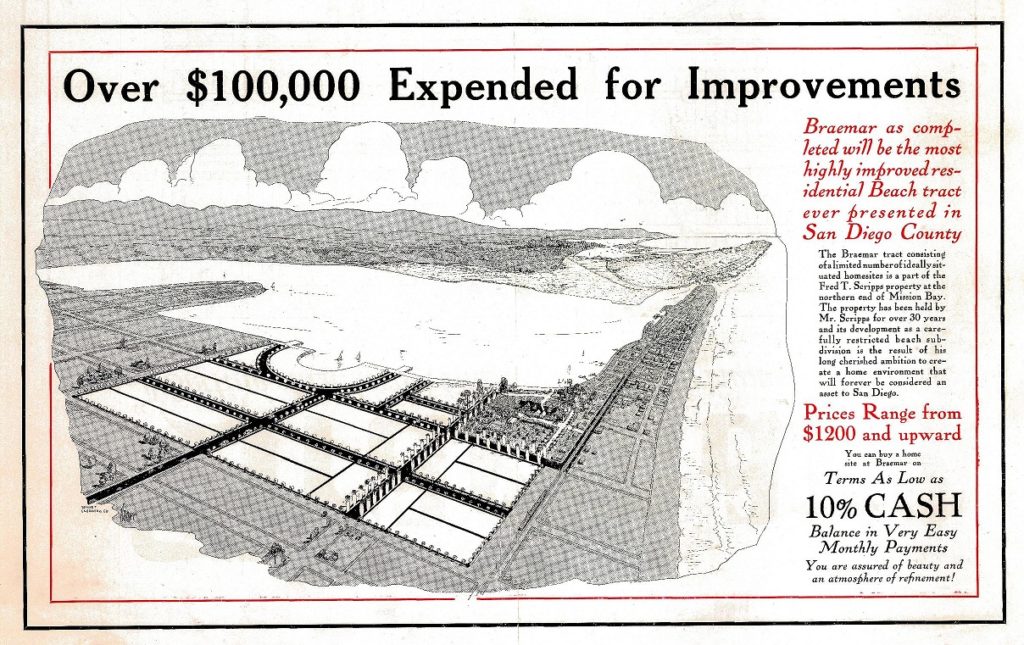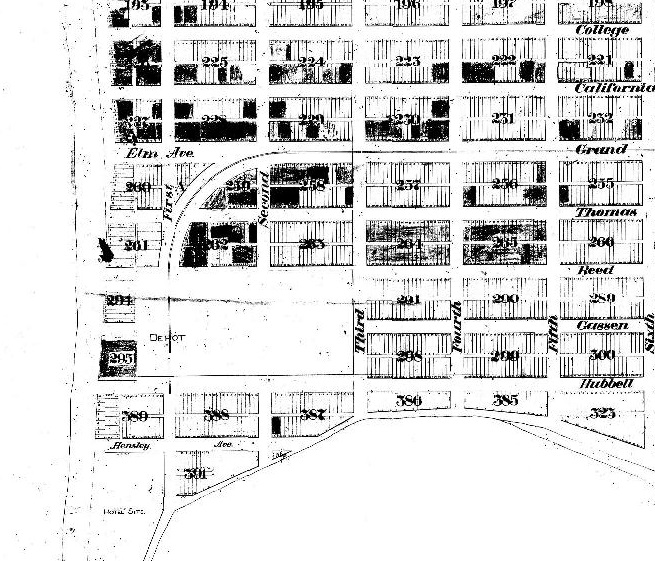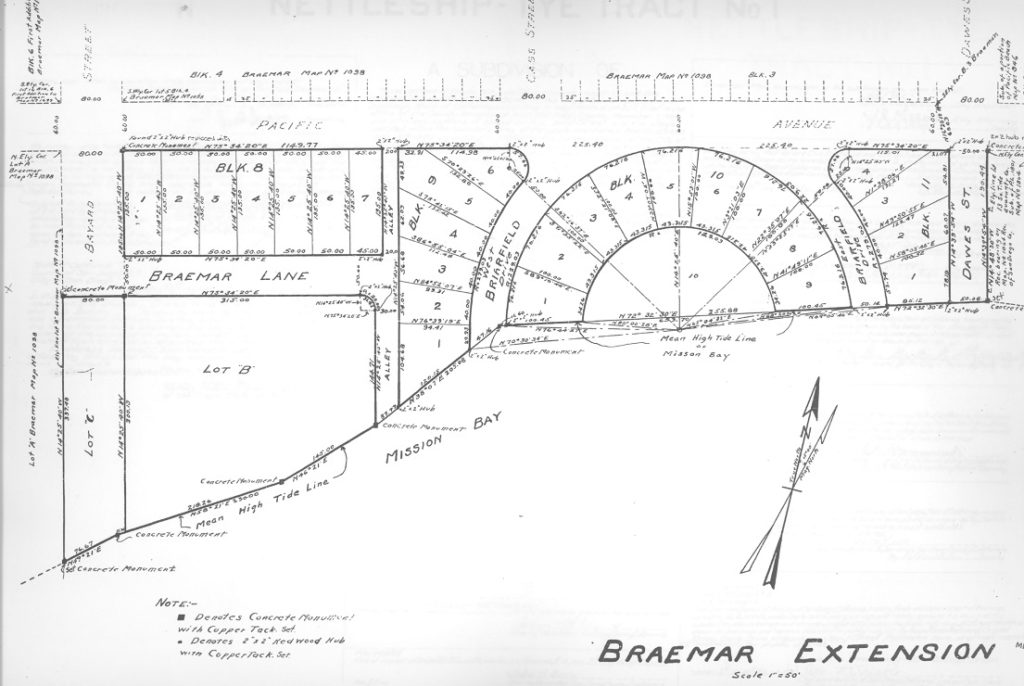
On September 16, 1889, two sisters appeared before a notary in Kansas City, Missouri, to sign applications for marriage licenses. Application No. 2511 was filled out for May E. Goff, who solemnly swore that she was of the age of 24 years, single and unmarried, and could lawfully contract and be joined in marriage to Frank J. Marshall, who was also 24, single and unmarried. Application No. 2512 was for Carrie Goff, who swore she was 22, single and unmarried, and could lawfully marry Victor A. Hinkle, who was 32 years of age. The brides were stenographers or ‘typewriters’, living in Kansas City with their widowed mother. The grooms were both salesmen for the Mosler Safe Company, where Frank’s older brother Thomas B. Marshall was manager.
In March 1894 the San Diego Union reported that Frank J. Marshall of Kansas City had bought two ten-acre blocks in Pacific Beach and had them plowed, piped and planted to trees; 1400 lemon trees and also prune, orange, peach, pear and apricot trees. A hedge of Monterey cypress would also be set out all around his land. Mr. Marshall would be returning to Kansas City in April but would return to Pacific Beach early next fall. He would bring his brother with him and each would build a handsome residence. The Union explained that Mr. Marshall had come from Kansas City to Los Angeles and wrote to a San Diego resident for information regarding climate, land, etc. He was advised to come and see for himself and was fully satisfied with what he saw in Pacific Beach.
The ‘ten-acre blocks’ that Frank Marshall purchased in February 1894 were laid out in the amended Pacific Beach subdivision map of 1892, on which the area north of the College Campus (now Pacific Plaza) and Alabama Avenue (now Diamond Street) had been divided into ‘acre lots’ of about 10 acres each, intended for agriculture. Mr. Marshall had paid $2150, or $125 an acre, for acre lots 30 and 53 (which were actually 8.6 acres each). On the map these lots were between 14th (now Olney) and the northern projection of 15th (Pendleton) streets and were separated by Idaho Avenue (Chalcedony Street), with lot 30 extending north to Georgia Avenue (Beryl Street) and lot 53 south to Alabama (Diamond; although the area is now part of the Admiral Hartman Community, where this street no longer exists).
In 1895 the San Diego Directory contained only 37 listings in Pacific Beach, half of whom were described as farmers or ranchers, many of them growing lemons on ranches developed on the acre lots. Lemon ranching was the principal economic activity in Pacific Beach and the Union’s weekly column of news from Pacific Beach regularly reported on developments affecting the lemon business. In February 1895 the column announced that the Marshalls, who owned twenty acres of fine lemon ranch at this place, were preparing to come to California and build on their ranch and make their homes there. In May the news was that the Marshalls expected to have their arrangements completed for removal to this place shortly. Their 20-acre ranch was looking well. They arrived in Pacific Beach in June and the Union reported that they had rented the Wilson house until they could build on their lemon ranch; ‘They come fully equipped for business and pleasure, having brought with them no less than four vehicles, and an abundance of home-making necessities’.

The Wilson house was the lemon ranch house on Acre Lot 33, a few blocks west of the Marshalls’ property, but the Marshalls didn’t occupy it for long. In September 1895 the Union reported that Mr. Marshall’s new house made a fine showing against the hills (and that Gen. Stearns, an ex-United States senator, had purchased the Wilson place). A few weeks later the paper reported that the Marshalls were moving into their new house and added that Mr. Marshall’s brother and brother-in-law were making arrangements to come to California and would locate at this place. The two families expected to reach Pacific Beach before winter.
Mr. Marshall’s brother arrived in January 1896; according to the San Diego Union T. B. Marshall and family of Kansas City had arrived from the east and were at the Horton House hotel downtown. The February 1, 1896, Union announced that T. B. Marshall was building on his ten-acre tract. Construction must have been rapid because by February 24 the paper noted that several artistic cottages had been built at this place during the year but the architecture of T. B. Marshall’s new house was a decided change. In April the report was that T. B. Marshall had moved his family into his new residence and a month later that Mr. T. B. Marshall’s new home was ‘the finest in our colony’. Photos of house, located at the corner of Olney and Diamond streets, do indicate that the architecture was a decided change from the plain frame houses on other lemon ranches at the time, such as the one built in 1892 on acre lot 34 and still standing at 1860 Law Street. The T. B. Marshall home included Queen Anne-style design features like bay windows and a square tower topped with a decorative widow’s walk.
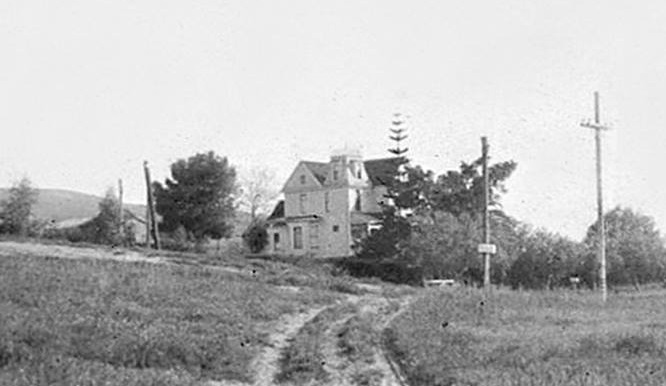
Frank Marshall’s brother-in-law, Victor Hinkle, with his wife Carrie, May Marshall’s sister, were the other family that had made arrangements to locate at ‘this place’ and expected to arrive before winter. In December 1895 the Union reported that Mr. and Mrs. Hinkle had moved into the Will Wagner cottage (on Diamond Street a half block west of where the T. B. Marshall house would be built). In February 1896 the Hinkles purchased acre lot 36, 10.2 acres lying between what today are Chalcedony, Ingraham, Beryl and Jewell streets, paying Alzora Haight $2000 or nearly $200 an acre for a developed lemon ranch. Acre lot 36 had originally been purchased by George Tutton in January 1892 but had been owned by Mr. and Mrs. Haight since September 1892. The Haights apparently never built a home on their property; a news item from 1894 reported that Mr. Haight and family had been ‘camping’ on their ten-acre ranch. In May 1896 the news was that Mr. Hinkle, who had bought the Tutton ten acres set to lemons, was building a fine residence there. Early photos show that the architecture of the Hinkles’ new residence was also in the Queen Anne style of the T. B. Marshall home, including a square tower with a decorative widow’s walk.
Frank and Thomas Marshall were joined in Pacific Beach by another brother later in 1896 when Clifford Marshall and his wife took up residence in Martha Dunn Corey’s cottage, also on Diamond Street in the block west of the new T. B. Marshall home. Like most Pacific Beach residents, the extended Marshall family and the Hinkles joined the Presbyterian Church and participated in church and community activities. When Miss Marian Thresher, the soprano in the church choir, departed for Jamul for a year in November 1896 Mrs. Clifford Marshall gave her a farewell party and her place in the choir was taken by Mrs. Hinkle (Miss Thresher was a former student at the San Diego College of Letters in Pacific Beach). Choir practice was held every Saturday afternoon at Mrs. Clifford Marshall’s residence.
Frank Marshall had purchased two Pacific Beach acre lots and had them plowed, piped and planted to trees while he returned to Kansas City, leaving the ranch in charge of Ed Barnes, another local lemon rancher (and another former College of Letters student). It was more than a year later that Frank and his brother Thomas moved from Kansas City with their families and built impressive homes on the ranch, and still much of their time was spent away from Pacific Beach, leaving day-to-day operations of the lemon ranch to others. In April 1897 the local news was that T. B. Marshall and family had returned to their beautiful home and young lemon grove after a prolonged stay in Los Angeles. They had also come down from Los Angeles to spend the holidays at their Manjessa ranch (presumably named for their two daughters, Maude, or Mandy, and Jessie). In July 1897 the news was that T. B. Marshall and family were to leave for Los Angeles for a year and in January 1898 Mr. Dorst and wife moved into T. B. Marshall’s elegantly furnished house. In April and again in July 1899 T. B. Marshall spent a few days in Pacific Beach looking after his interests before returning to Los Angeles, where he was listed in the 1900 census as general agent for Mosler Safe Co.
The lemon business depended on growing and harvesting lemons but also on curing, packing and shipping them to distant markets, mostly in the Midwest. In December 1896 Sterling Honeycutt, also a lemon rancher, made a deal with the Pacific Beach Company in which he acquired the north half of block 239, south of Hornblend between Lamont and Morrell streets, and also the company’s hotel and dance pavilion on the ocean front near the foot of Grand Avenue. The agreement required Honeycutt to move the hotel and pavilion from the beach to block 239, where the hotel ended up at the corner of Hornblend and Lamont and the pavilion at the corner of Hornblend and Morrell, adjacent to the tracks of the San Diego, Pacific Beach and La Jolla railway, which then ran along what is now Balboa Avenue. Honeycutt refurbished and reopened the hotel, but the dance pavilion was converted to a facility for curing and packing lemons and loading them onto railroad cars at the adjacent siding. In November 1897 Honeycutt sold the northeastern quarter of block 239, including the packing plant, to F. J. Marshall and F. W. Barnes, who each acquired an undivided half-interest in the property (F. W. Barnes was Ed Barnes’ father and was also a lemon rancher).
Although Frank Marshall owned a lemon ranch and a half-interest in the community lemon packing plant, he also remained connected to the safe company in Kansas City and at the end of 1897 he returned to resume his former position there (the 1899 Kansas City directory listed Frank and Thomas Marshall, both working for Mosler Safe Co. and living at the same address). Clifford Marshall moved from Dr. Corey’s house into Frank Marshall’s house in January 1898. The Union reported that Mrs. Marshall and daughter Verna would spend the winter in San Diego and would remain until spring, then would return to Pacific Beach to make their future home. In October 1898 Frank Marshall returned from Kansas City to ‘make quite a visit’ and in April 1899 he returned once again ‘with the intention of making his home in San Diego’ (the 1900 federal census listed Frank Marshall, rancher, living with wife May and daughter Birdie at 1460 3rd Street in San Diego). In the absence of the Marshall brothers Mr. Lewis Martin had been in charge of the ranches in 1899 and Mr. Jacobson took over their care in 1900.
In December 1900 Frank and May Marshall sold acre lot 30 as well as their undivided half-interest in the packing plant in block 239 to Robert M. Baker and in 1901 Mr. Baker also bought the adjoining acre lot 53. The Frank Marshalls moved to Los Angeles and later to Riverside. The Thomas Marshalls remained in Los Angeles, although in September 1904 the Evening Tribune reported that T. B. Marshall of the Mosler Safe and Lock Co. was in San Diego to oversee the work of hanging the four big doors upon the vaults of the National Bank of Commerce building. And when T. B. Marshall’s automobile won a prize in the floral parade at the Los Angeles Fiesta in 1906, Mrs. Hinkle of Pacific Beach was a passenger.
Unlike the Marshalls, the Hinkles had adapted to the semi-rural lifestyle of late nineteenth-century Pacific Beach and continued living in their ‘commodious and elegant’ home on acre lot 36 well into the twentieth century. A Horticultural Notes column in the Union in 1899 noted that V. A. Hinkle of Pacific Beach was one of the ranchers who ‘lives on the ranch’ and the result was deep cultivation, fine fruit and clean trees. When lemon ranching became uneconomical after the turn of the century Mr. Hinkle transitioned into general farming but also specialized in beekeeping. In 1911 the city council amended the city bee ordinance to allow hives to be kept to within 100 feet of highways after V. A. Hinkle appeared before it and declared that bees did not use their stingers on people except to protect against interference. It was necessary to bother them at their hive before one could experience the ‘stinging rebuke’ which made them so feared. He placed ads in the Evening Tribune offering to sell ‘strong and healthy’ bees, in addition to ads offering a Jersey cow cheap, a large ranch horse – bargain, and two fine young milk cows.
Mrs. Hinkle became a member and later an officer of the Pacific Beach Reading Club, and often hosted meetings at the Hinkle home. In 1914 the reading club opened the library in its club house to the public and made its collection of books available for circulation. Mrs. Hinkle was appointed to oversee the library and is considered the community’s first librarian. The Hinkles had two daughters, Lucille and Mildred, who went to the Pacific Beach school and, like their parents, were active in community affairs. Lucille, born in 1896, entertained Reading Club meetings with mandolin and guitar selections and later attended Stanford University. Mildred, born in 1899, played the violin and sang and went on to Northwestern College in Chicago.
A January 1921 ad in the San Diego Union listed a house of 8 rooms, bath and sleeping porch for sale – $3000, easy terms, Mrs. V. A. Hinkle, telephone Pacific Beach 264. The home faced south, had a good garage, gas, electricity, fireplace and a fine view. The home did not sell in 1921 but Mr. Hinkle died in January 1922 and in September 1922 Mrs. Hinkle sold acre lot 36, with the Hinkle home, to Lawrence Adams. Mrs. Hinkle moved to New York City where in 1927 Mrs. F. T. Scripps, embarking for England on the Leviathan, spent a few days with friends, among them Mrs. Carrie Hinkle, an oldtime resident of Pacific Beach.
In January 1924 Mr. Adams also bought lots 21-24 of block 87 of Pacific Beach, the northwest corner of Ingraham and Law streets, and in 1926 he had the Hinkle house moved there, where it is still standing today, one of the oldest and best preserved historic homes in Pacific Beach. Adams sold both properties in 1928. In 1947 the portion of acre lot 36 now facing Law Street was subdivided as Chalcedony Terrace and the portion facing Beryl Street became Chalcedony Terrace Addition. The southerly 125 feet, the portion facing Chalcedony Street, has not been subdivided and lots there are still described as portions of acre lot 36, although the lemon trees and bees have long since been replaced by houses and apartments.
The Marshall ranches in acre lots 30 and 53 were among the properties in the eastern portion of Pacific Beach that were taken by the federal government and incorporated into the Bayview Terrace federal housing project for defense workers in 1941. They are now within the Admiral Hartman Community for military families, and although the Frank Marshall family’s house on acre lot 30 is no longer standing the site is still marked by a huge Moreton Bay fig tree that once stood over it. The T. G. Marshall house on acre lot 53, once considered the ‘finest in our colony’, is also no longer standing. It burned to the ground after being struck by lightning on Christmas Eve in 1940.








